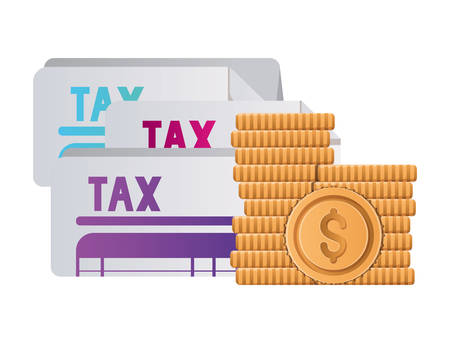Overview of Pension Tax Relief in the UK
Pension tax relief is a cornerstone of retirement planning for millions of people across the UK. At its core, pension tax relief means that the government adds money to your pension pot based on your contributions, effectively giving you back some of the income tax youve already paid. This system is designed to encourage everyone—from employees in their first jobs to self-employed workers—to save for their future. There are two main types of pensions: workplace pensions, which are often set up and contributed to by your employer, and personal pensions, which you arrange and pay into yourself. Both types benefit from tax relief, though the mechanics can differ slightly depending on how you contribute and your rate of income tax. Understanding how these systems work is crucial because any change in pension tax relief could have a direct impact on how much you can save for retirement—and ultimately, your quality of life when you stop working. With potential reforms on the horizon, it’s more important than ever for everyday savers and retirees to stay informed about what could affect their long-term financial plans.
2. Recent and Potential Future Changes
Over the past few years, the UK government has repeatedly reviewed the pension tax relief system, with both confirmed changes and ongoing speculation about further reforms. While no drastic overhauls have yet occurred, there have been several significant proposals and hints at what might come next. The core of these discussions revolves around making the system fairer and reducing costs to the Exchequer.
Recent Proposals and Speculations
One of the most discussed ideas is replacing the current tiered system—where tax relief is granted at an individual’s marginal rate (20%, 40%, or 45%)—with a flat-rate relief for all savers. This would particularly affect higher earners who currently benefit most from the existing structure. There has also been talk of lowering the Annual Allowance (currently £60,000) or Lifetime Allowance (which was abolished in 2023/24 but could be reintroduced), as ways to limit tax-advantaged pension savings.
Summary Table: Key Proposals and Their Impact
| Proposal | Description | Who Might Be Affected? |
|---|---|---|
| Flat-Rate Tax Relief | Same percentage tax relief for all savers (e.g., 25% or 30%) | Higher-rate taxpayers lose out; basic-rate payers could gain |
| Annual Allowance Reduction | Lowering yearly maximum pension contributions eligible for tax relief | Those saving large amounts each year |
| Reintroducing Lifetime Allowance | Capping total tax-advantaged pension savings again | Savers with high-value pensions; those close to retirement |
Expert Predictions for What’s Next
Pension experts generally agree that some kind of reform is likely within the next few years, especially as the government faces pressure to balance public finances. Many anticipate a move towards a flat-rate relief, possibly between 25%–30%, while others warn that limits on annual contributions may become stricter. It’s also possible that employer contributions could face new rules or restrictions. For everyday savers and retirees, this means it’s wise to stay informed and consider whether maximising your pension contributions now could help you make the most of current tax advantages before any changes come into effect.

3. How Could the Changes Impact Savers and Retirees?
When it comes to future changes in pension tax relief, UK savers and retirees need to be aware of how these adjustments could affect their day-to-day finances and long-term plans. The impact will likely vary depending on your current income level, how much you’re able to contribute to your pension, and whether you’re still saving or already drawing an income in retirement.
Take-Home Pay
If higher-rate tax relief is reduced or replaced with a flat rate for all, higher earners may see less money back from the taxman each time they make a pension contribution. This means a larger portion of your gross pay stays with HMRC rather than boosting your pension pot. On the other hand, basic-rate taxpayers might benefit if a new flat rate offers more relief than they currently receive, giving their take-home pay a modest bump in value through higher effective savings.
Growth of Retirement Savings
The rules around tax relief have a direct impact on how quickly your pension grows over time. For those earning more, less generous relief could slow the growth of their pension pots, potentially requiring increased personal contributions to hit retirement targets. Basic-rate taxpayers, especially those just starting out or with lower incomes, could find themselves better off if changes mean greater incentives to save early and often. It’s important to keep an eye on your annual allowance too, as any reduction here could further limit high earners’ ability to build up significant tax-efficient savings.
Tax Bills in Retirement
Changes to pension tax relief today can also influence the amount of tax you’ll pay once you begin drawing from your pot. If you’ve built up less due to reduced reliefs, you may need to supplement your income from other sources—some of which might not be as tax-efficient. Conversely, those who benefit from increased relief might enjoy a slightly larger pension income, but should always factor in potential future changes to how pensions are taxed at withdrawal.
Different Income Levels: Winners and Losers
The practical effects depend heavily on where you sit on the earnings ladder. Higher earners are most at risk of losing out if relief is flattened or capped, while moderate and lower earners could gain more incentive to save for retirement. For everyone, it’s wise to review your current pension arrangements regularly and consider speaking with a financial adviser who understands the ever-shifting UK pensions landscape. Staying informed means you can tweak your contributions or investment strategy now, making sure future changes don’t catch you off guard.
4. Tips for Maximising Pension Savings Amid Uncertainty
With the prospect of future changes to pension tax relief, it’s more important than ever for UK savers and retirees to take proactive steps to protect and grow their retirement pots. Here are some practical, British-focused strategies you can consider:
Review Your Pension Contributions Regularly
Consistently review how much you’re contributing to your pension each month. If you’re a basic-rate taxpayer, contributing enough to receive full employer matching through workplace schemes is a smart move. Higher earners should keep a close eye on annual allowance limits, which may be subject to change in upcoming budgets.
Explore ISA Alternatives
Given the uncertainty around pension tax relief, Individual Savings Accounts (ISAs) offer a flexible supplement to your pension savings. ISAs allow tax-free growth and withdrawals without age restrictions, making them a valuable part of your long-term savings plan. Compare key features below:
| Account Type | Annual Allowance (2024/25) | Tax on Growth | Withdrawal Restrictions |
|---|---|---|---|
| Pension | £60,000* | No | Age 55/57+ |
| ISA | £20,000 | No | No age limit |
*Subject to tapering for high earners
Consolidate Old Pensions
If you’ve had several jobs over your career, it’s likely you have multiple pension pots scattered across different providers. Consider consolidating them into one pot for easier management and potentially lower fees. However, always check whether any old plans have valuable guarantees or benefits before transferring.
Keep an Eye on Charges and Fees
Pension charges can eat into your long-term growth. Shop around for low-cost providers and regularly review the fees on both pensions and ISAs. Even small percentage differences can add up over time. Heres a quick comparison:
| Provider Type | Typical Annual Fee (%) |
|---|---|
| Traditional Pension Provider | 0.75 – 1.5% |
| Low-Cost Online Platform | 0.2 – 0.6% |
Final Tips:
- Check if you qualify for tax-free lump sums at retirement.
- Stay updated on government announcements regarding pension legislation.
- If in doubt, seek advice from a regulated financial adviser who understands UK pensions.
The landscape may change, but being proactive now will help secure your retirement future regardless of what comes next.
5. Action Steps and Resources for Staying Informed
Staying ahead of potential changes to pension tax relief in the UK is crucial for securing your financial future. Here are some practical steps you can take right now:
Review Your Pension Statements Regularly
Make it a habit to go through your annual pension statements. This helps you understand how much you’ve saved, how your investments are performing, and whether you’re on track to meet your retirement goals. Look out for any updates or notifications from your provider about upcoming legislative changes.
Join Workplace Pension Schemes
If you’re employed and not yet enrolled in a workplace pension scheme, consider joining as soon as possible. Take full advantage of employer contributions and any government incentives while they are still available. If you’re self-employed, explore options like personal pensions or SIPPs (Self-Invested Personal Pensions).
Consult Trusted UK Guidance
Keep informed with reliable sources such as the Gov.uk pension tax relief page, MoneyHelper, or seek regulated advice from a qualified financial adviser. These resources offer up-to-date information and impartial guidance tailored to UK residents.
Set Reminders for Policy Updates
Pension rules can change quickly—especially after budgets or major government announcements. Set calendar reminders to check official sites after each fiscal event so you don’t miss important updates that might affect your plans.
Take Control of Your Retirement Planning
By reviewing your pension regularly, maximising contributions, and staying informed through trusted channels, you’ll be better prepared no matter how pension tax relief evolves in the future. Proactive steps today can make a significant difference in your retirement comfort tomorrow.

